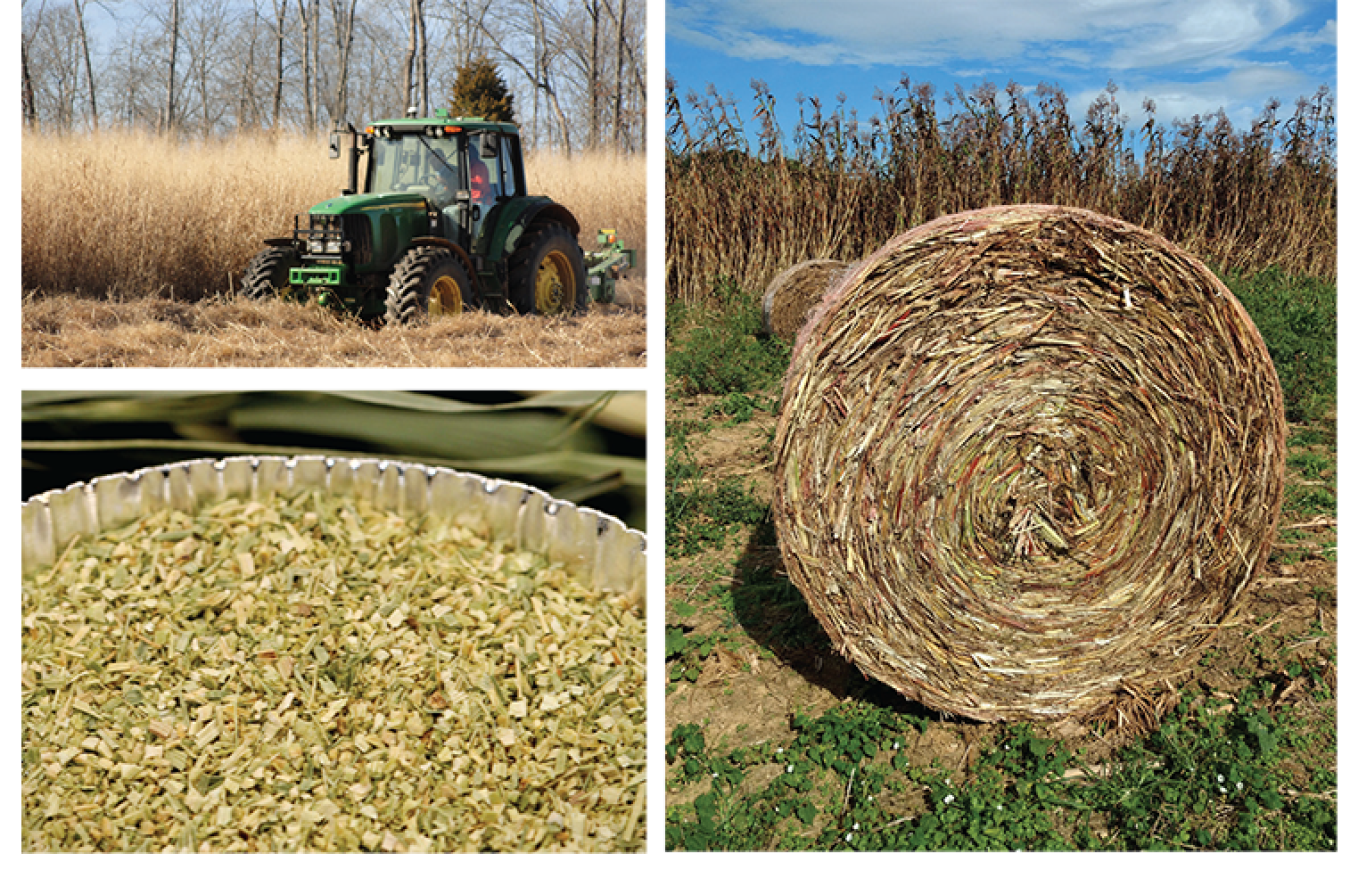The Department of Energy's (DOE's) Office of Energy Efficiency and Renewable Energy's Bioenergy Technologies Office (BETO) Feedstock Technologies program focuses on technologies and processes that transform renewable carbon sources into conversion-ready feedstocks.
Research and development (R&D) to transform renewable carbon and waste resources into feedstocks for conversion to biofuels, bioproducts, and biopower will expand biomass resource potential in the United States.

Feedstock Technologies R&D focuses on improving methods to convert renewable carbon and waste resources into conversion-ready feedstocks. Top left: Switchgrass harvest. Top right: Switchgrass, baled. Bottom left: Chopped and ground switchgrass.
Biomass Feedstocks as a Renewable Carbon Source
Terrestrial lignocellulosic biomass (i.e., plants and plant-based materials not used for food or feed) is an abundant and renewable resource for producing biofuels, bioproducts, and biopower.
Biomass and other renewable or re-usable carbon sources commonly used for bioenergy applications include:
- Agricultural residues (e.g., corn stover)
- Algae
- Dedicated energy crops (e.g., switchgrass, miscanthus, energy cane, sweet sorghum, high biomass sorghum, hybrid poplars, and shrub willows)
- Forestry residues (e.g., logging residues and forest thinning)
- Waste streams and re-useable carbon sources (e.g., the non-recyclable organic portion of municipal solid waste, biosolids, sludges, waste food, plastics, CO2, industrial waste gases, and manure slurries).
Feedstock Technologies Activities
The Feedstock Technologies program develops science-based strategies and technologies to reduce the cost, improve the quality, and increase the quantity of renewable and re-usable carbon-based feedstocks.
Each R&D area is composed of activities which help improve the efficiency and reliability of feedstocks for conversion into biofuels, bioproducts, and bioenergy. These include:
- Resource mobilization
- Supply chain analysis
- Harvest and collection
- Storage
- Transport and handling
- Preprocessing and quality improvement
- Supply system integration.

The Feedstock Supply activity supports the development of cost-effective strategies, technologies, and systems to harvest and deliver volumes of biomass feedstock at the quality needed by biorefineries.

Feedstock Logistics activities involve the operations needed to harvest or collect a renewable carbon source, such as biomass, and move it to the biorefinery, while ensuring that it is conversion-ready.
Feedstock-Conversion Interface R&D
R&D activities that are focused on the interface of feedstock supply systems and feedstock conversion are coordinated through the Feedstock Technologies program collaboration with the Conversion Technologies and System Development and Integration programs on the Feedstock-Conversion Interface Consortium (FCIC).

The Feedstock-Conversion Interface Consortium (FCIC) is an integrated and collaborative network of nine national laboratories dedicated to addressing technical risks and understanding how biomass properties influence collection, storage, handling, preprocessing, and conversion technologies with the goal of improving the overall operational reliability of integrated pioneer biorefineries.

